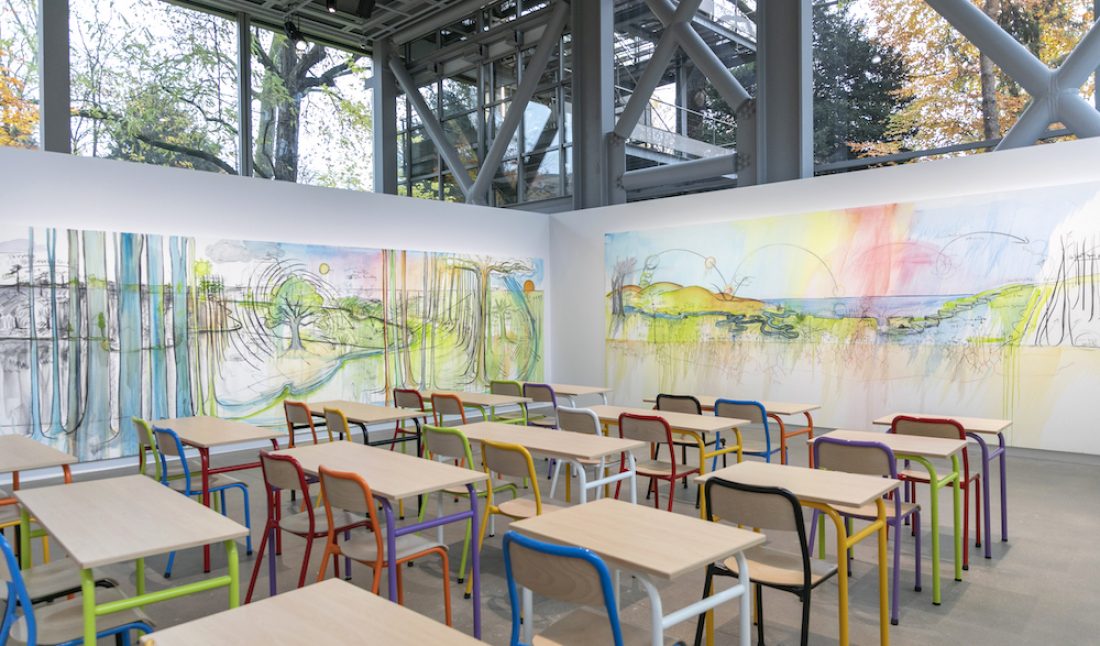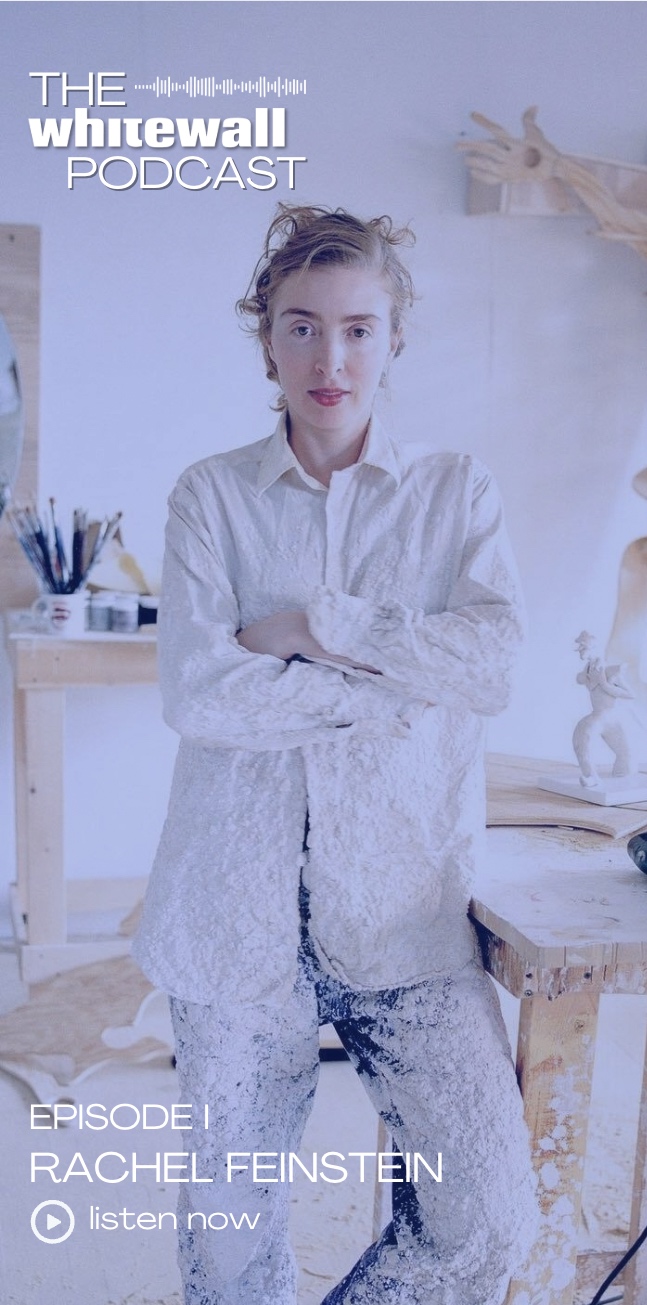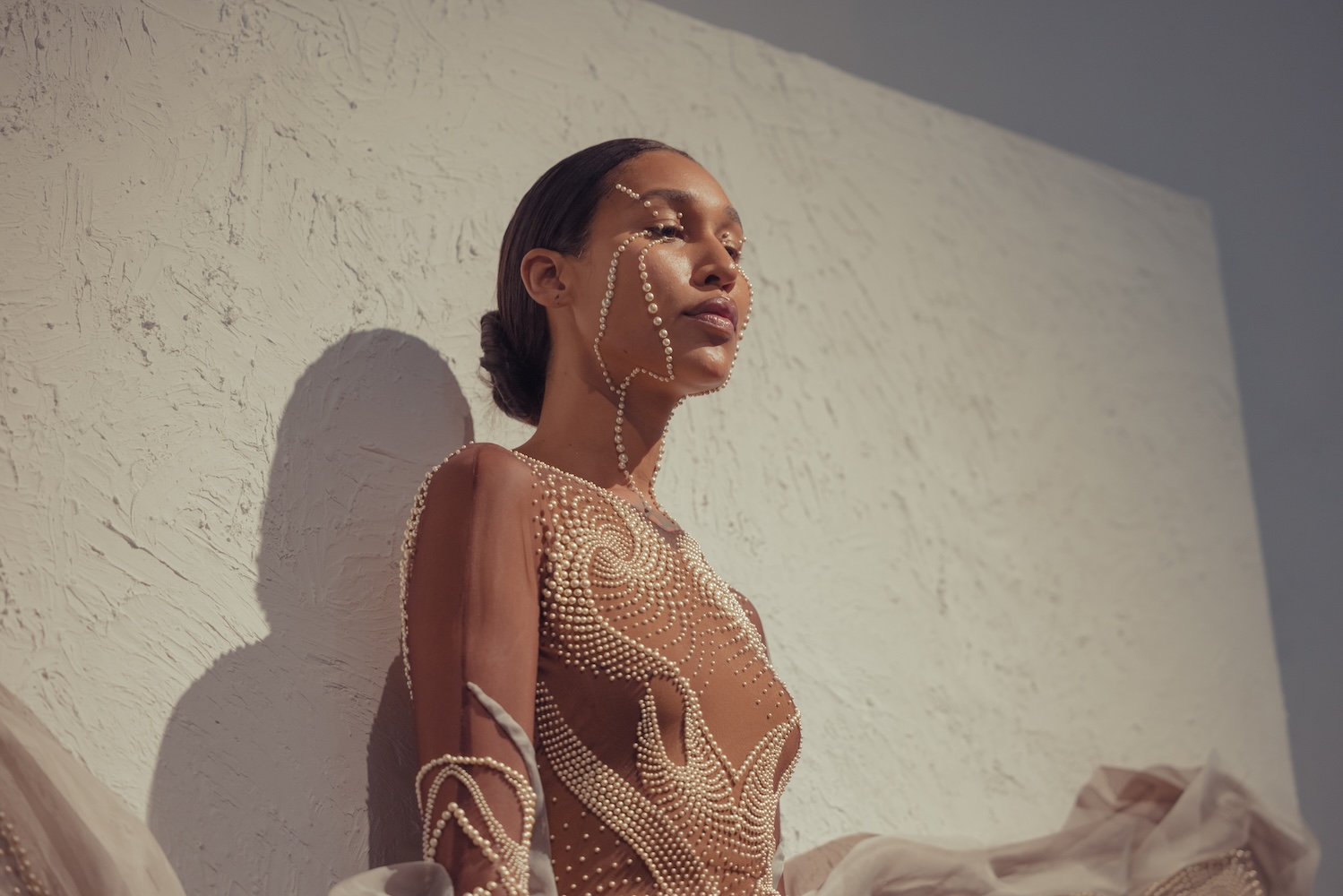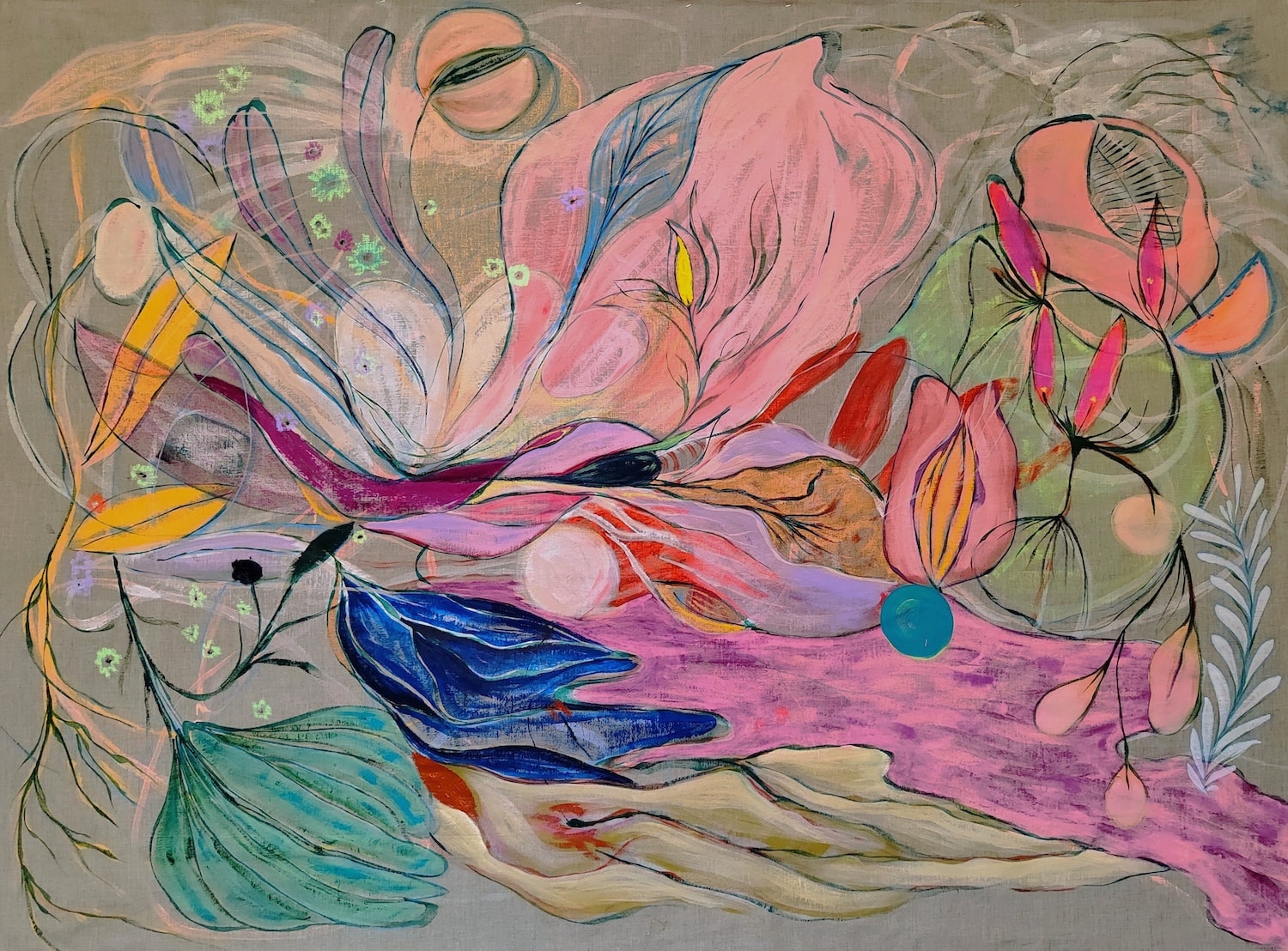The Fondation Cartier pour l’art contemporain in Paris has been transformed—for just a few months—into a school. Its classrooms are filled with the usual things like desks, chairs, windows, doors. Its students are the visitors. Its lessons are nearly 60 paintings by Fabrice Hyber. The French artist, who created nearly 20 new works for this unique exhibition entitled “The Valley,” has always seen his painting like blackboards. Their large-scale canvases are where he learns, researches, and works out his ideas, thoughts, and understandings of the world.
In his expansive studio on his family’s former sheep farm in France’s Vendean countryside (where sheep still roam freely, including in and out of his studio), Hyber works on dozens of pieces at the same time by drawing, painting, gluing, dreaming, imagining, and musing. With this solo show at Fondation Cartier, curated by Jeanne Barrall with assistance from Margaux Knight, Hyber wanted to show a window into his world and connect his prolific artist practice with his life in the country. It is there that since the 1990s he’s planted and sowed trees to create a wooded landscape, repopulating the once agricultural plot with trees.
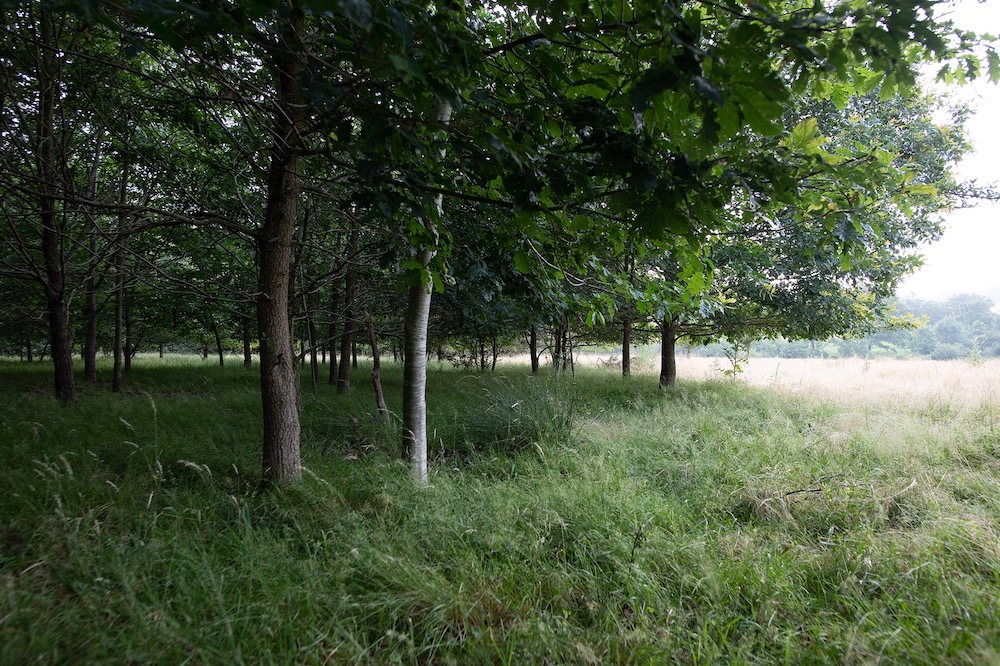 The forest planted by Fabrice Hyber, photo by Michael Huard.
The forest planted by Fabrice Hyber, photo by Michael Huard.
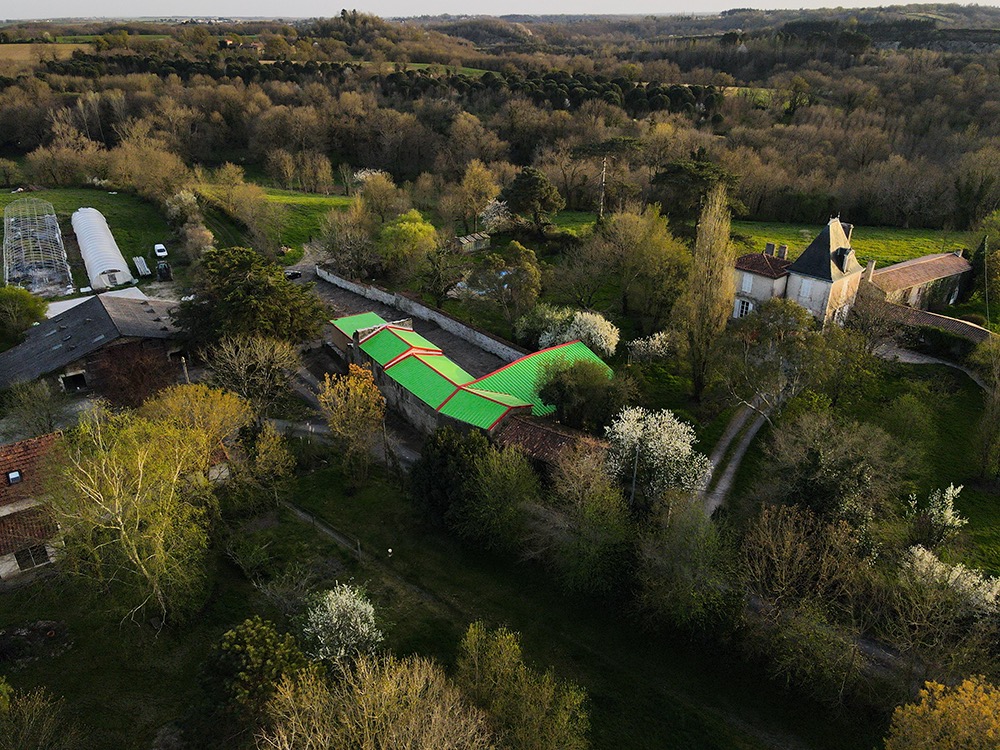 Photo by Michael Huard.
Photo by Michael Huard.
The vast paintings explore nature, mathematics, neuroscience, history, astrophysics, biology, and even love. They are evidence of learning and experimentation. “I sow trees just as I sow signs and images. They are there, I sow seeds of thought that are visible, they develop, and grow. I am no longer in control,” said the artist in a statement. Via his classroom settings, he offers all students an opportunity to see in multiple ways and join him in his latest discoveries. “What is important in a school in my opinion, even more than learning things, is learning how to look at things, and observing how these evolve,” Hyber said.
Accompanying the exhibition, which is on view through April 30, 2023, is a program of classes co-organized with partner schools for children and adults, a podcast series of conversations, an exhibition catalog, and a two-part documentary. Whitewall spoke with Hyber to learn more about “The Valley.”
WHITEWALL: The name of the show is, “The Valley,” which comes from your ongoing project of sowing and growing a forest on your family’s farm. How did you begin that ambitious project?
FABRICE HYBER: I was born in the country in southwestern France. My parents had a sheep farm. There was no forest there. I decided to buy the farm when it was possible and thought, what can I do with it? It is a place where I love to walk, to see nature, to see the movement of the water. It smells beautiful, everything there. I understand life in the valley, and I have learned a lot of things. I decided not only to plant trees but to seed trees—to seed and to grow something very strong. It’s my paradise now.
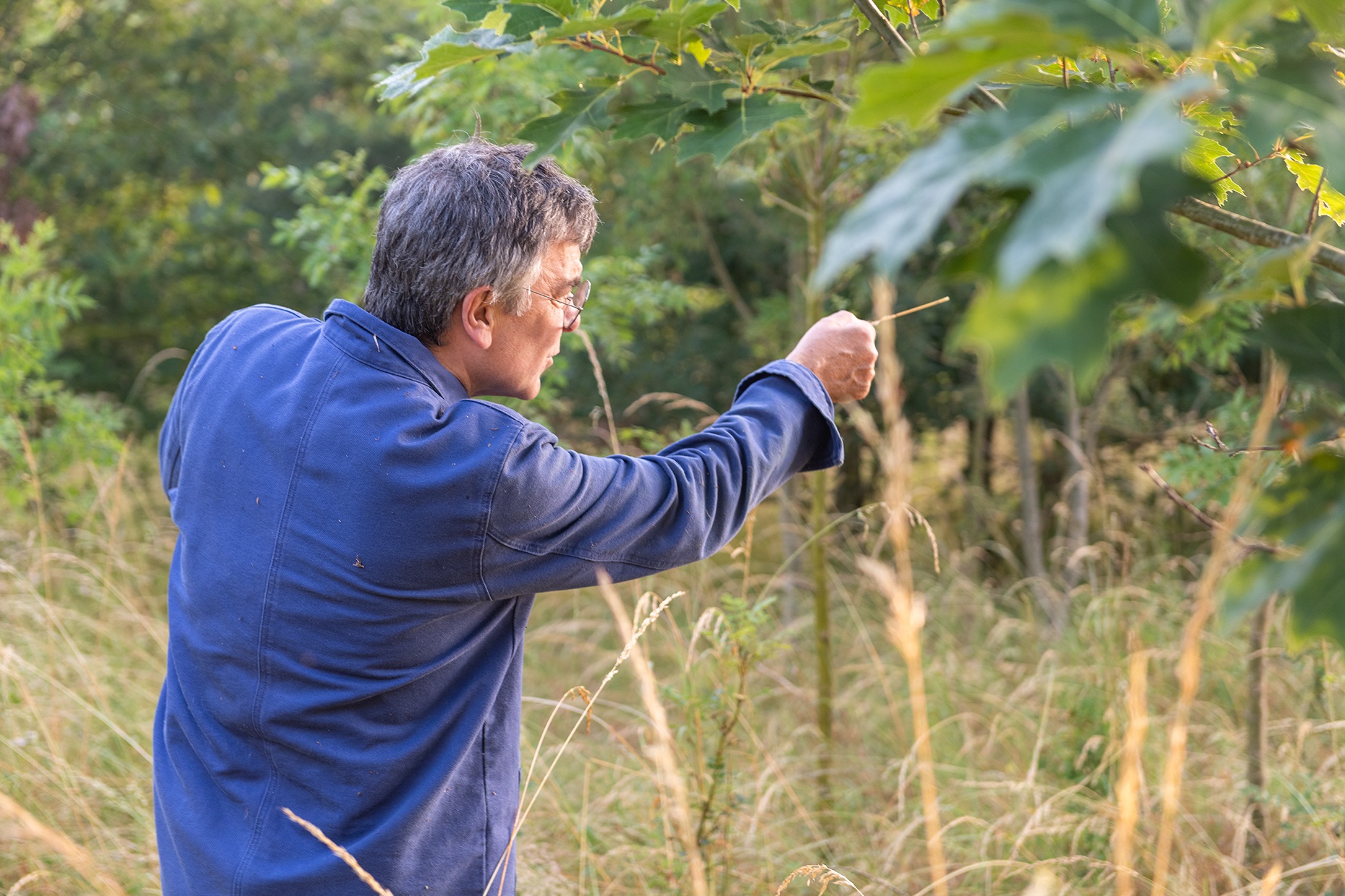 Fabrice Hyber, photo by Michael Huard.
Fabrice Hyber, photo by Michael Huard.
WW: You’ve related your process of sowing seeds to your process of painting. How do they connect for you?
FH: I have white canvases on the wall, and I try to ask questions about things that I don’t understand. I’m very curious about a lot of things. I’ve taken some drawings from some lectures. All these drawings are on the wall, and it looks like a seed in the ground. It grows, slowly entering my mind, and after some days, weeks, or months, I can begin to build a demonstration of my question. After some months, or some weeks, the demonstration becomes a mental landscape.
When you come to my studio, there is not just one canvas on the wall, but there are a hundred—a line of different canvases in different sizes and different shapes, depending on chance and movement. My studio is a garden of painting and growing. I like the idea that when I go to the valley I learn something and I conceive something. I think my studio and the valley are both alive.
In the beginning in my paintings, there were very simple materials. I am very open with materials that one never tries. I can use lipstick, crude oil, the earth.
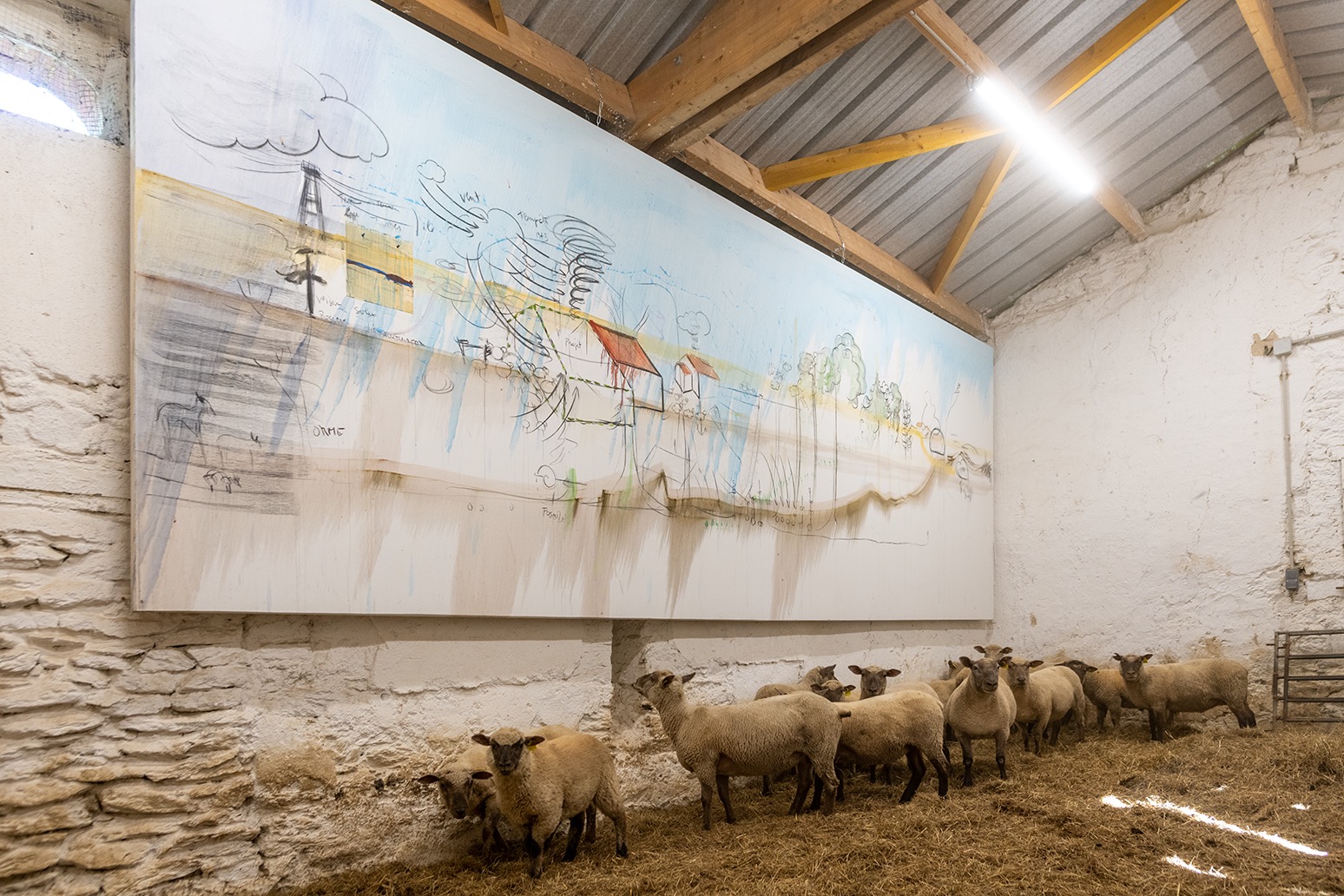 Fabrice Hyber’s studio, photo by Michael Huard.
Fabrice Hyber’s studio, photo by Michael Huard.
WW: And I saw in a recent video that you have sheep right there with you? Your studio sounds totally at one with the farm, with the valley—it’s all connected.
FH: Yes, it’s all connected. I’m very quick there, in the valley. I understand everything. It’s my way of life. What I want to do more and more is to show that the valley, or the studio, is a place where I learn at the same time. I’m not sure of anything at first. I just want to show ways to understand life, the way of the world.
WW: You’ve described your paintings as blackboards, as a way to learn, or a way to teach. Have you always seen them that way?
FH: All my paintings have been like a blackboard since the beginning. My work starts with something and becomes something else because my mind moves. I try to understand and look at the world in another way. I am always very open.
 Installation view of Fabrice Hyber’s “The Valley” at Fondation Cartier pour l’art contemporain, photo by Michel Slomka / MYOP – Lumento.
Installation view of Fabrice Hyber’s “The Valley” at Fondation Cartier pour l’art contemporain, photo by Michel Slomka / MYOP – Lumento.
 Installation view of Fabrice Hyber’s “The Valley” at Fondation Cartier pour l’art contemporain, photo by Michel Slomka / MYOP – Lumento.
Installation view of Fabrice Hyber’s “The Valley” at Fondation Cartier pour l’art contemporain, photo by Michel Slomka / MYOP – Lumento.
WW: How did you arrive at the idea of making this exhibition at the Fondation Cartier to be set within a school?
FH: I wanted to show my paintings as a way of thinking. For a long time, I always put chairs in my shows because I like the for people to sit down, to look at it, and to understand what it is. It’s not only decoration, the painting, it’s more about the way of thinking. You can understand something. You can learn something. And because of what I learn when I draw, I want to show that to the people who visit. I have known Fondation Cartier for so many years and it is always a place where I learned a lot. I wanted to make a link to that model.
It’s a meeting of something, a conservation of lots of different ways, and a place where you can meet different propositions of life. I always keep this idea in the painting. There is always a sign of life in my paintings. It’s never flat. When I work, it is always more about the poetics and the light, the forest and the recycled things, and then all of it comes alive.
 Installation view of Fabrice Hyber’s “The Valley” at Fondation Cartier pour l’art contemporain, photo by Michel Slomka / MYOP – Lumento.
Installation view of Fabrice Hyber’s “The Valley” at Fondation Cartier pour l’art contemporain, photo by Michel Slomka / MYOP – Lumento.
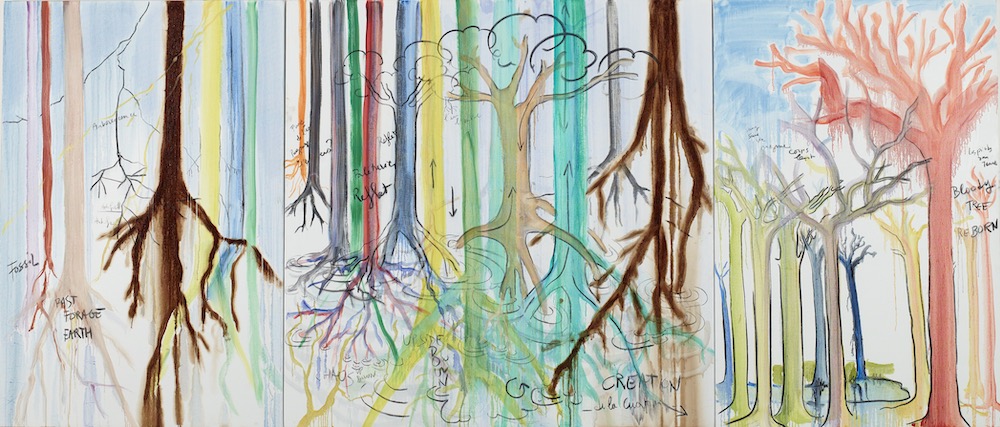 Fabrice Hyber, “L’Arbre mental,” 2019, charcoal, oil paint, epoxy resin on canvas, petroleum, 150 x 400 cm, © Fabrice Hyber / Adagp, Paris, 2022.
Fabrice Hyber, “L’Arbre mental,” 2019, charcoal, oil paint, epoxy resin on canvas, petroleum, 150 x 400 cm, © Fabrice Hyber / Adagp, Paris, 2022.
WW: How have you seen visitors moving through the classrooms?
FH: They move through the space and they sit down in front of the paintings in the chairs. It’s really very nice to see people laugh. They laugh because it is something they’ve known since they were young. It is a very positive moment. It’s good to sit down in front of a painting. They are new doors or window for looking at the world. This show is very comforting because it looks like something you know—you already know the place. We love to go into the garden and you have flowers and fresh fruit. Here, people eat for their minds.
 Fabrice Hyber in exhibition “The Valley” at Fondation Cartier pour l’art contemporain, 2022, photo © Michel Slomka / MYOP – Lumento.
Fabrice Hyber in exhibition “The Valley” at Fondation Cartier pour l’art contemporain, 2022, photo © Michel Slomka / MYOP – Lumento.







